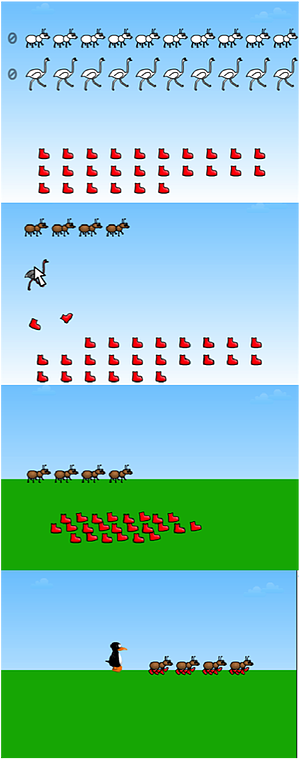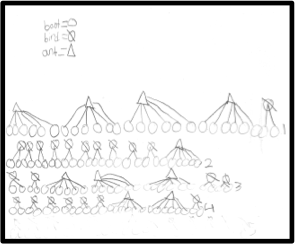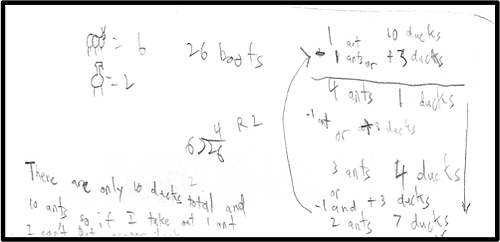
I recently blogged about how my classroom experiences taught me that students learn more deeply when I let them apply their prior knowledge to solve problems, instead of jumping in and teaching them the mathematical procedures first.
I frequently hear teachers say, “I need to rearrange this ST Math topic because I have not taught it in class yet.” In most cases, that’s putting the cart before the horse. ST Math games can help students begin to build a visual schema for concepts before they are formally taught in class.
Here’s an easy way to try this method in your classroom with ST Math.
Get started giving students opportunities that require them to make sense of math by using what they already know to solve new problems. You can find games at every grade level that introduce major topics of study visually through easy to understand contexts.
Here are 8 steps to getting started:
1. Choose a puzzle from a game relevant to what you will be teaching (level 1 is a good place to start).

2. Project the puzzle in teacher mode (by triple-clicking/tapping in the lower right corner of the screen. Instructions on ST Math Central).
3. Ask student to share with a partner three things they notice about the puzzle (move cursor over different parts of the puzzle, things that light up and things that don’t).
4. Make a couple of intentional mistakes. Use teacher mode to examine the animation.
5. Ask students why it did not work and what JiJi is asking them to figure out.
6. Have students create the puzzle at their desks (paper and pencil is usually enough though you may want to have some manipulatives at hand.)
7. Ask students to solve the puzzle. Walk around and ask students to share their strategies with you. Select 2-3 common strategies to share that move from concrete to abstract.
8. Have students share and ask the class to compare the strategies.
I recently visited a class of fifth graders and posed a multi-step, multiple operation problem which would eventually be represented symbolically as 2x + 6y = 26.
The teacher had not introduced this topic yet and was nervous that his students would not be able to solve the problem. He was surprised at what we learned about his students by allowing them to make sense of the problem and apply their prior knowledge in solving it. The task was to find all the ways you could put 26 shoes on ostriches and ants.
I projected the puzzle in class and, after making a couple intentional mistakes, I knew students understood what the puzzle was asking them to figure out. Students quickly began solving this problem. Through their solutions, the teacher and I gained a deeper understanding of what students knew and were able to apply.

Some students drew out each boot and grouped them in 6’s and 2’s until no more boots were left. These students often used guess and check with little to no organization of the combinations.
Other students applied mental arithmetic and worked systematically to find (and prove they had found) all possible combinations. This student divided 26 by six to find the most ants that could be used and interpreted the remainder (two) as the boots for one ostrich. Then he saw that by taking one ant away, you could put shoes on three ostriches. Then he systematically found all the combinations: (6 x 4) + (1 x 2) = 26; then (6 x 3) + (4 x 2) =26.
The pattern eventually allowed him to stop calculating the shoes for each animal and just continue replacing one ant with three ostriches.

After seeing the wide range of solutions, we were able to see how best to design next steps to help all students reach the goal of understanding how symbols can be used to represent this problem: two shoes for each ostrich plus six shoes for each ant equals 26 (2x + 6y = 26) find all combinations of ostriches and ants.
Pose an ST Math puzzle to your class and explore a new concept with your students, and share what you learn on Twitter by tagging @STMath.

Erich Zeller is the Instructional Designer for the Product Team at MIND Research Institute. Follow him on Twitter @ErichZeller1.
Comment